
|
Home
| Databases
| WorldLII
| Search
| Feedback
| Help
Palau Judiciary Court Annual Report 2014 |
2014 Annual Report
Palau Judiciary
Court Annual Report
2014
Court Annual Report
2014
Download PDF version of the Palau 2014 Annual Report [3MB]
Contents
Message from the Chief Justice
Mission and Vision
Introduction
I. Palau Judiciary Organizational Chart
Overview of the Judiciary
II. About the Courts
A. Supreme Court (Trial Division and Appellate Division)
B. Land Court
C. Court of Common Pleas
III. Judicial Nominating Commission
Palau Judiciary Highlights
Training and Workshops
A. Australian Leadership Awards Fellowship (ALAF) Program
B. Family Violence and Youth Justice Follow-up workshop
C. Penal Code Workshop
D. Advanced Mediation Workshop
Youth Services Team Helps Palau’s Young Adults
New Court Building under Construction
The Judiciary Welcomes Its New Court Counsel
Administrative Changes
The Courts’ Work
IV. Accountability: Code of Conduct and Complaints
V. Case Management (Supreme Court, Land Court, and Court of Common Pleas)
A. Clearance Rates
B. Average Duration of a Case
C. The Court of Appeals
1. Outcome of Appeals in 2014
D. The Court of Common Pleas
VI. Accessibility and Fairness
A. Free Legal Aid
B. Court Fee Waiver
C. Access and Fairness Public Survey
VII. Court Offices, Departments, and Technology
A. Office of the Clerk of Courts
1. Birth Records
2. Death Records
3. Marriage Records
4. Land Records
5. Land Registry
6. Land Court Mediation
7. Supreme Court Mediation
B. Marshal Division
C. Probation Office
D. Law Library
E. Technology – Management Information Systems (MIS)
F. Facility and Property Management
G. Budget Office
H. Office of the Court Counsels
I. Human Resource Office
VIII. Annual Budget - FY2014
IX. Court Personnel (as of January 2015)
Message from the: Chief Justice
The people have the right to know what their judiciary branch of the government does. We at the Judiciary believe it is our duty to inform the people what we do .This second Annual Report is one means of achieving both goals, our duty to inform and the people’s right to know.
When people know what we at the Judiciary do, they would be better informed and would help us to do our work better. We request the people, especially users of the court’s services, to tell us how we may improve the delivery and quality of our services.
We want to take this opportunity to express our appreciation to the many who have given us assistances and support in various ways .We believe these assistances and supports have sustained our continuing efforts to do better.
First and foremost, we want to thank our Olbiil Era Kelulau (Congress) and the Executive Branch for our budget for the last two fiscal years.
We want to also express our appreciation to the government of the Republic of China, Taiwan for its generous contribution for the installation of our management information system and the funding of the new Pablo Ringang Building.
We want to convey our appreciation to the government of Japan for the services of its Japan International Cooperation Agency (JICA) volunteers who have helped us in the trainings of our IT personnel.
We also want to thank the Ninth Circuit Pacific Islands Committee and its Chairperson, Senior District Judge Consuelo B. Marshall. Using grants from the U.S. Department of the Interior, the Committee has been developing and delivering various educational and professional training programs for judges and court personnel .The Committee collaborates with the Pacific Judicial Council, an organization of Micronesian and American Samoa Judiciaries. The Palau Judiciary has benefited greatly from these trainings.
Last and certainly not the least, we express our appreciation to the Pacific Judicial Development Programme (“PJDP”) funded by the government of New Zealand and administered by the Federal Courts of Australia. For the last five years, PJDP has achieved phenomenal work in increasing capacities of judges and judicial officers as well as improving courts’ processes and systems in 14 Pacific Island countries, including Palau.
The government of New Zealand has generously decided to not only continue to fund the Programme, but to administer it as well, beginning this year. The former PJDP is now known as Judicial Pacific Participation Fund (JPPF).We express our appreciation to the government and the Judiciary of New Zealand for their continued support.
Finally, we thank those who participated in some of the surveys we have conducted to find out how we may improve the Judiciary’ services. Initially, only a few people took time to participate in the surveys. We are encouraged by the increased participation in the recent surveys. We are committed to improve our services.
Ma uriul,
Arthur Ngiraklsong
Chief Justice
Palau Supreme Court
Mission and Vision
MISSION
The mission of the Palau Judiciary is to preserve and enhance the rule of law by providing a just, efficient, and accessible mechanism for resolving disputes. The Judiciary will interpret and apply the law, as modified by custom and tradition, consistently, impartially, and independently to protect the rights and liberties guaranteed by the laws and constitution of the Republic of Palau.
VISION
The Courts of the Republic of Palau will provide justice for all while maintaining the highest standards of performance, professionalism, and ethics. Recognizing the inherent dignity of every person who participates in the justice system, the Judiciary will treat each participant with respect and will strive to make the process understandable, affordable, and efficient. Through the thoughtful, impartial, and well-reasoned resolution of disputes, the Judiciary enhances the public trust and confidence in this independent branch of government.
Introduction
The Republic of Palau is an island nation located in the western Pacific Ocean roughly 500 miles southeast of the Philippines. Geographically, Palau constitutes part of the Caroline Island chain and is part of the larger island group of Micronesia. Palau consists of more than 340 islands, of which only 9 are permanently inhabited. The land area of Palau totals approximately 460 square kilometers (178 square miles), about 2.5 times the size of Washington, D.C. According to the 2005 population census, Palau’s population was 19,907 (Palau did not conduct a 2010 census). Current estimates put Palau’s population at approximately 21,000. About 70% of Palauans live in the former capital city of Koror on Koror Island. The capital relocated in 2006 from Koror to a newly constructed complex in Melekeok State on the larger but less developed island of Babeldaob – the second largest island in Micronesia after Guam.
In 1978, after more than three decades of United States administration under the United Nations Trust Territory of the Pacific Islands (TTPI), Palau, as part of a process toward self government, voted against joining the Federated States of Micronesia and opted for independent status. Palau adopted its own constitution and became the Republic of Palau in 1981. It signed a compact of free association with the United States in 1982 and the Compact was ratified in 1993. Palau gained full sovereignty when the Compact went into effect on October 1, 1994, concluding Palau’s transition from trusteeship to independence.
Palau is a multi-party democratic republic with directly elected executive and legislative branches. The President is both head of state and head of government. Executive power is exercised by the government while legislative power is vested in both the government and the Palau National Congress (the Olbiil era Kelulau). The Palau National Congress has two houses – the Senate with nine members elected nationwide and the House of Delegates made up of 16 members, one from each of Palau’s 16 states. There is also a Council of Chiefs, comprising the highest traditional chiefs from each of the 16 states. The Council of Chiefs serves as an advisory board to the President on matters concerning traditional laws and customs. Article X of the Constitution of the Republic of Palau provides for a judiciary “independent of the legislative and executive powers.”
This Annual Report summarizes the Judiciary’s operations and accomplishments in the 2014 calendar year, as well as its challenges going forward. The Annual Report is intended to inform the public about what the Palau Judiciary does and how it functions.
I. Palau Judiciary Organizational Chart
Overview of the Judiciary
II. About the Courts
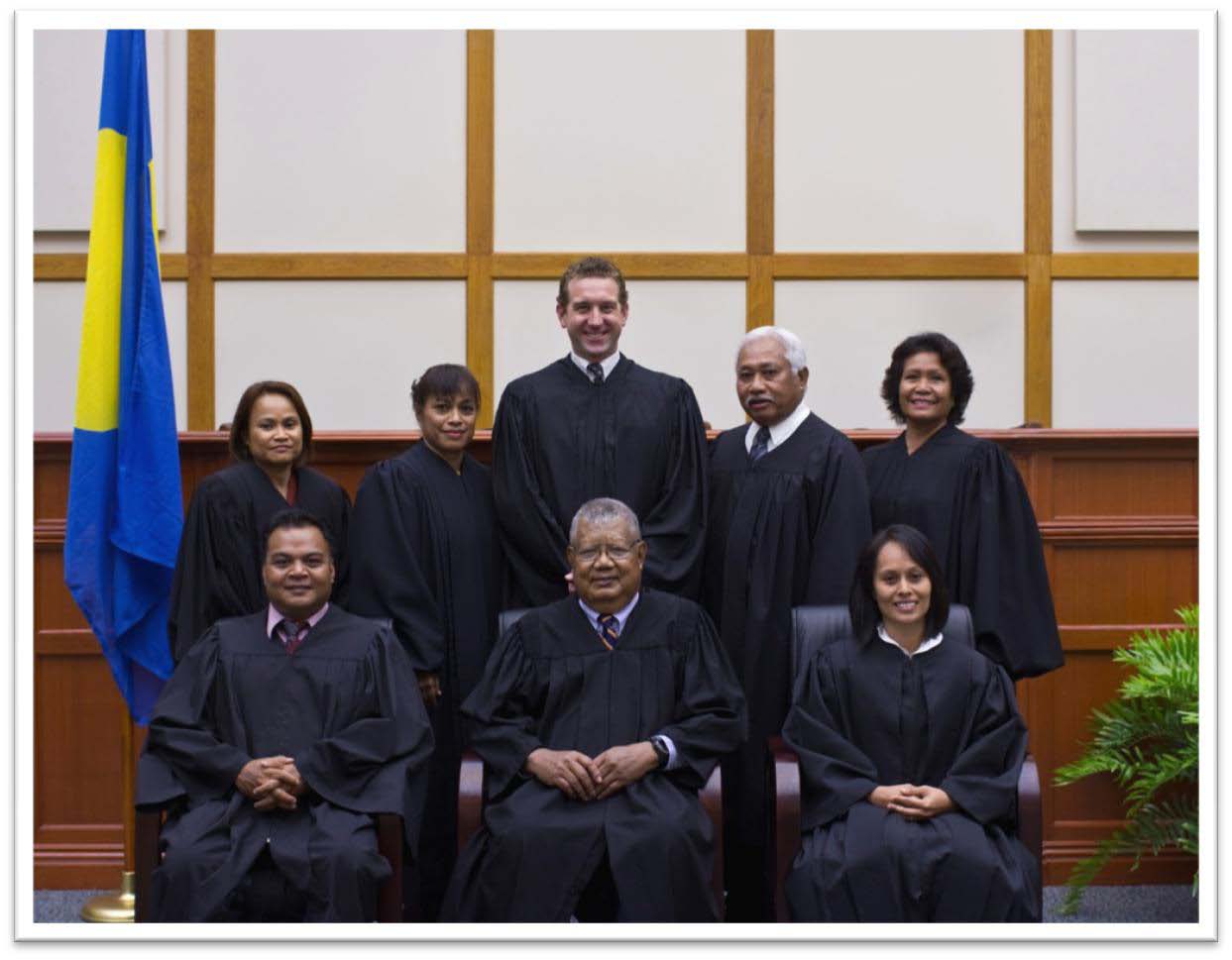
Back
(L-R): Associate Justice Lourdes F. Materne, Associate Justice Kathleen
M. Salii, Associate Justice R. Ashby Pate, Associate Judge Salvador
Ingereklii, and Associate Judge Rose Mary Skebong.
Front (L-R): Senior Judge C. Quay Polloi, Chief Justice Arthur Ngiraklsong, and Senior Judge Honora E. R. Rudimch
Front (L-R): Senior Judge C. Quay Polloi, Chief Justice Arthur Ngiraklsong, and Senior Judge Honora E. R. Rudimch
The Palau Judiciary consists of the Supreme Court (Trial Division and Appellate Division), the Land Court, the Court of Common Pleas, and associated administrative units that provide various services to the courts.
A. Supreme Court (Trial Division and Appellate Division)
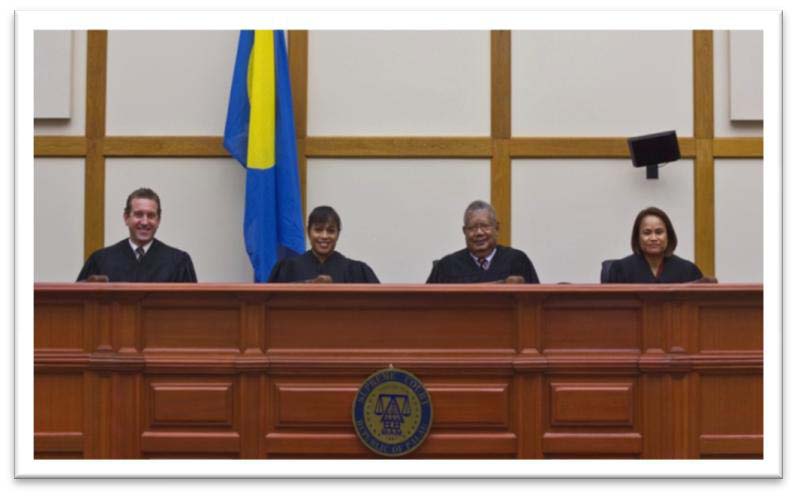
Article X of the Constitution vests the Supreme Court with power over all matters in law and equity and outlines its structure and operation. The Supreme Court is divided into a Trial Division and an Appellate Division. Cases are initially adjudicated by a single justice in the Trial Division. Appeals from Trial Division decisions are heard by panels of three different justices in the Appellate Division. The Appellate Division is a “court of last resort,” a superior court of record having appellate jurisdiction with final authority to adjudicate all cases and controversies properly brought before it. The Supreme Court also handles disciplinary and other special proceedings.
The Supreme Court currently consists of a Chief Justice and three Associate Justices. Additional judges are appointed on an as-needed basis as Associate Justices Pro Tem or Part-Time Associate Justices to assist with the Court’s workload
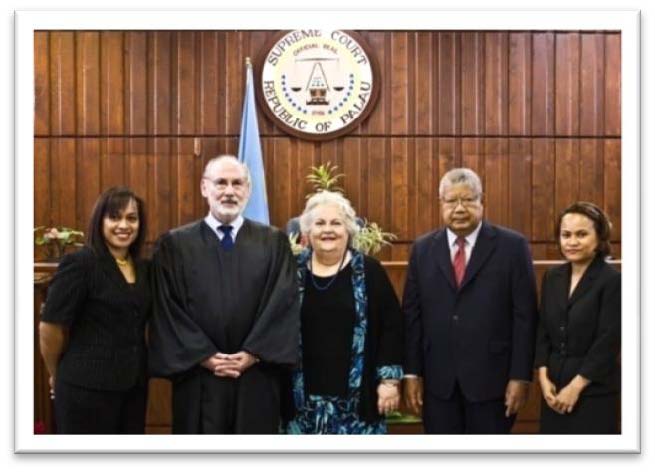
(L-R)AJ Salii, Part-time Associate Justice Foley, Part-Time Associate Justice Maraman, CJ Ngiraklsong, AJ Materne
B. Land Court
The Land Court was established in 1996 and is vested with jurisdiction over civil cases involving the adjudication of title to land or any interest in land. Appeals from the Land Court go directly to the Appellate Division of the Supreme Court. The Land Court makes determinations with respect to the ownership of all lands within the Republic, including the return of land that became public as a result of its acquisition by previous occupying powers through force, coercion, fraud, or without just compensation. The Land Court currently includes a Senior Judge and two Associate Judges. Land Court proceedings are generally conducted in Palauan, although translation is available for non-Palauan speakers.
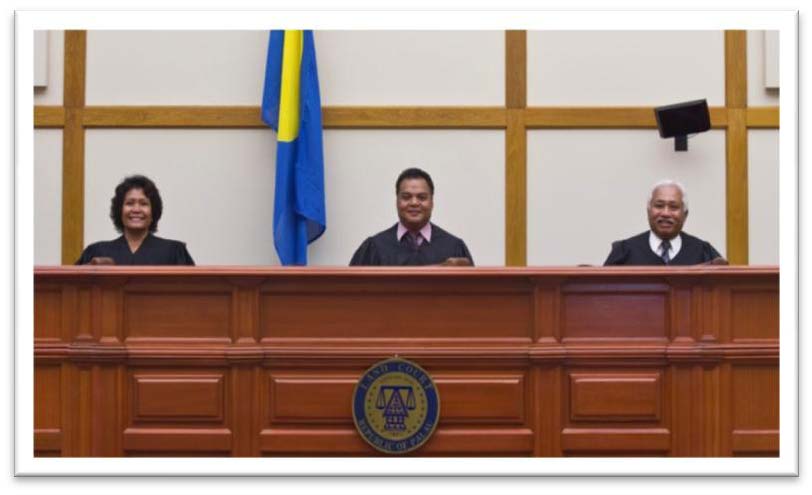
C. Court of Common Pleas
The Court of Common Pleas was established in 1982 to handle “common” civil and criminal cases. It has jurisdiction to hear civil cases where the amount claimed or in dispute is $10,000 or less. It does not, however, adjudicate cases involving land interests, no matter what the amount claimed or in dispute is. Land cases are heard in the Land Court. The Court of Common Pleas also hears all divorce and child support cases, regardless of the amount in controversy. Generally, the civil cases that come before the Court include name changes, family law matters, and simple estate settlement proceedings. The Court also hears small claims, where the amount claimed is $3,000 or less, in less formal hearings. The Court of Common Pleas may also adjudicate criminal cases. Criminal cases are assigned to the Court of Common Pleas by the Chief Justice of the Supreme Court and the maximum possible punishment for criminal cases heard in the Court of Common Pleas shall not exceed a $10,000 fine or imprisonment for five years. Appeals from cases adjudicated by the Court of Common Pleas are filed directly with the Appellate Division of the Supreme Court.
The Chief Justice of the Supreme Court has also designated the Court of Common Pleas to handle civil domestic abuse cases bought under the Family Protection Act (“FPA”) enacted in November 2012.To meet the requirements of the FPA’s mandates, the Court has created forms and protocols to assure that the Court is available to assist persons seeking orders of protection, both during the Court’s normal operating hours and during after-hours, if a victim of abuse needs immediate protection. The Court is also collaborating with other agencies, including the Bureau of Public Safety, the Attorney General’s Office, the Ministry of Health, and the Ministry of Community and Cultural Affairs to successfully implement the FPA’s mandates.
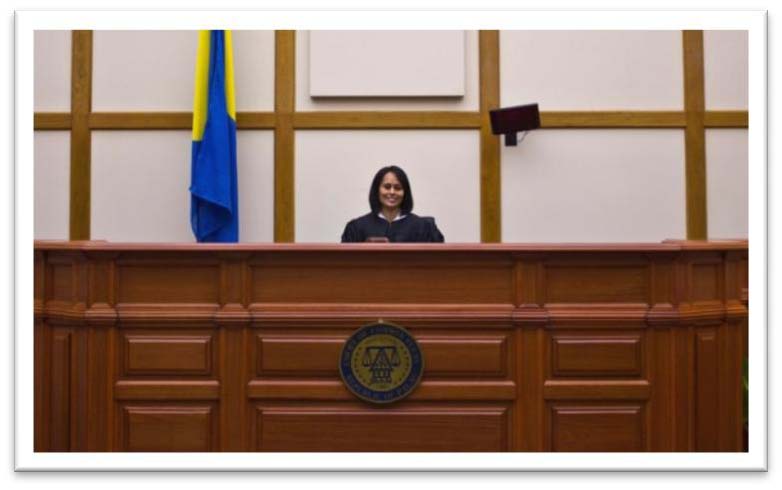
III. Judicial Nominating Commission
The Judicial Nominating Commission (the “JNC”) consists of seven members, all of whom must be citizens of Palau. The Chief Justice serves as the JNC’s Chairperson. Three members are elected from and by the Palau Bar Association and the final three members are appointed by the President of Palau. If a JNC member becomes a candidate for political office, they must resign their seat on the JNC.
When a vacancy for a Judge or Justice within the Palau Judiciary becomes available, the JNC produces a list of seven nominees and presents the list to the President. The list of nominees is created using a secret ballot. If there is a conflict of interest involving a JNC member and a potential nominee, the JNC member must recuse himself or herself from voting or discussions regarding the nominee. In addition, should a JNC member become a potential nominee, that member must also recuse himself or herself. The qualities sought in judicial nominees include: integrity and moral courage; legal ability and experience; intelligence and wisdom; compassion and fairness; diligence and decisiveness; judicial temperament; and awareness of and sensitivity to Palauan culture. Every year, regardless of whether there is a Judicial Office vacancy, the JNC chairperson is required to call a meeting to review the commission’s current rules and procedures, educate new members on current rules and procedures, and compose a list of seven potential nominees for Chief Justice should the current Chief Justice resign or pass away.
Palau Judiciary Highlights
Training and Workshops
A. Australian Leadership Awards Fellowship (ALAF) Program
On September 22 – October 03, 2014, Senior Judge Honora E. Remengesau Rudimch attended the Australian Leadership Awards Fellowship (ALAF) Program in Sydney and Melbourne, Australia. The ALAF program was sponsored and funded by the Australia Department of Foreign Affairs and Trade and the Family Court of Australia. The goal of the program was to improve access to family law courts for women and other disadvantaged groups by identifying ways to strengthen the delivery of family law services to women, children and persons with disabilities. The ALAF aimed to facilitate dialogue among judicial leaders, NGOs and CSO’s on the (i) role of family courts in ending violence against women and children; (ii) policy responses to increasing women’s access to justice; and (iii) how the courts and other stakeholders in the Pacific might improve their coordinated efforts against violence. Other ALAF Fellows from Palau included Lalii C. Sakuma, then Chief Public Defender from the Public Defender’s Office and Rebecca Koshiba, Program Manager/Social Worker from the Victims of Crimes Assistance program (Ministry of Health). The fellowship also included participants from Papua New Guinea and Fiji.

Front
Row: Senior Judge Rudimch, Palau Fellow, Chief Justice Diana Bryant,
Family Court of Australia, Natasha Stott-Despoja, Ambassador for Women
& Children Australia, Nani Zulminani, Director PEKKA Indonesia,
Chief Magistrate Nerrie Eliakim, Supreme Court of PNG
Back Row: Cate Sumner, Lead Adviser Legal Identity Program Australia Indonesia Partnership for Justice, Ume Wainetti, PNG Fellow, Angelyn Singh, Fiji Fellow, Lalii C. Sakuma, Palau Fellow, Leisha Lister, Executive Adviser Family Court of Australia, Senior Magistrate Rosie Johnson, PNG Fellow, Elena Down, CBM Nossal Partnership for Disability Inclusive Development, PEKKA representative, Rebecca Koshiba, Palau Fellow, Barbara Malimali, Fiji Fellow, Rajni Chand, Fiji Fellow
Back Row: Cate Sumner, Lead Adviser Legal Identity Program Australia Indonesia Partnership for Justice, Ume Wainetti, PNG Fellow, Angelyn Singh, Fiji Fellow, Lalii C. Sakuma, Palau Fellow, Leisha Lister, Executive Adviser Family Court of Australia, Senior Magistrate Rosie Johnson, PNG Fellow, Elena Down, CBM Nossal Partnership for Disability Inclusive Development, PEKKA representative, Rebecca Koshiba, Palau Fellow, Barbara Malimali, Fiji Fellow, Rajni Chand, Fiji Fellow
During the two week program, the ALAF participants also attended the 7th International Association for Court Administration Conference in Sydney. Senior Judge Rudimch, along with the Chief Magistrate of PNG, a PhD candidate from the School of Governance Maastricht University, The Netherlands, and the Dep. Director International Programmes of the Australian Human Rights Commission gave presentations on “International Perspectives on Access to Justice and the Empowerment of Women Affected by Family/Domestic Violence.” Senior Judge Rudimch’s presentation focused on Palau based on the Preliminary Findings from the 2014 Belau Family Health Study Survey (BFHSS), which have since been adopted, and the Family Protection Act of 2012 and other recent developments in the area of domestic violence.
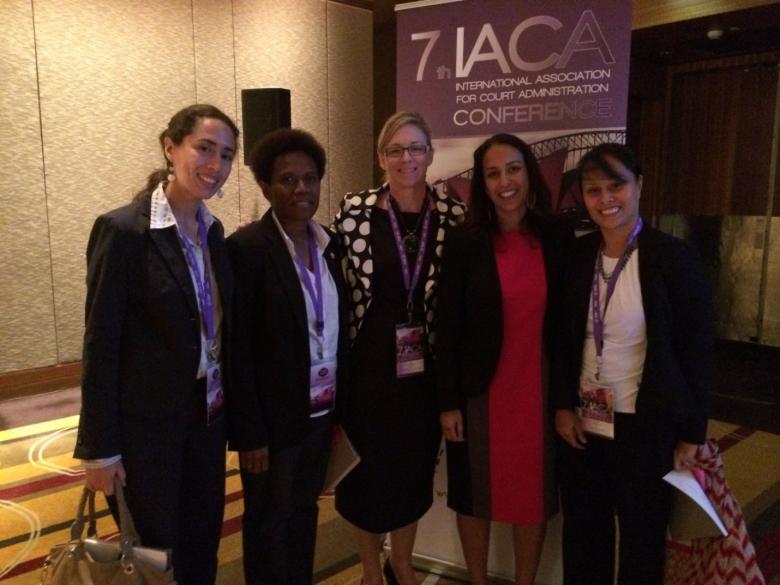
Julieta
Marotta, The Netherlands School of Governance Maastricht University,
Chief Magistrate Nerrie Eliakim, Supreme Court of PNG, Leisha Lister,
Executive Adviser Family Court of Australia, Natasha De Silva, Dep.
Director International Programs Unit of the Australia Human Rights
Commission, Senior Judge Rudimch, Palau Court of Common Pleas
B. Family Violence and Youth Justice Follow-up Workshop
Domestic violence Is a cross-cutting issue affecting families across the pacific islands without regard for income, status, education level, race, or gender. The Palau Judiciary is committed to helping to combat this problem. As a continuation of the effort to do so, The Palau Judiciary, in partnership with the Pacific Judicial Development Programme, held a follow-up workshop on Family Violence and Youth Justice at the Koror State Assembly Hall September 9 through September 11, 2014. Participants were primarily stakeholder agencies involved in the implementation of the Family Protection Act including the Bureau of Public Safety, Office of the Attorney General, the Palau Judiciary, the Ministry of Health and the Ministry of Community and Cultural Affairs. Other participants included senators, members of the Palau Bar Association, Ministry of Education officials, PCC/Talent Search Program representatives, and various non-governmental organizations and interested citizens including First Lady Debbie M. Remengesau.
The purpose of the workshop was to study the Family Protection Act, review protocols established by some of the partner agencies to ensure the implementation of the Act, and to discuss the progress made since the last Family Violence and Youth Justice Workshop held in 2012. Presentation topics included the specific provisions of the Act, from police responsibilities to the various crimes under the Act and the process for obtaining a civil domestic abuse restraining order and the a description of the types of specialist services available at the Behavioral Health Division, including those for domestic abuse cases. Participants walked away with a deeper understanding of the protections and resources available under the Act and the procedures in place to access them. Agreed outcomes of the workshop included the need for a shelter, allocation of fines to support victims’ services, better data collection and information sharing, and legislation designed specifically to address elder abuse.
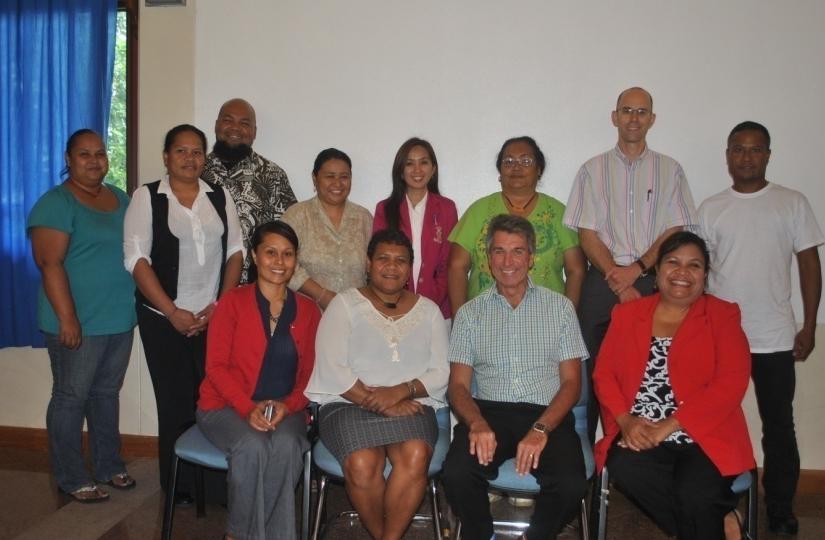
Back(L-R)Persilla
Rengiil-Probation Officer, Jonnie Ngeluk-Police Officer, Vierra
Toribiong-Probation Officer, Dr. Marie Rocelle, Dr. Jasmine
Vergara-DBHd, Rebecca Koshiba-VOCA/MOH, Lorenze Metzner – PJDP
Programme Coordinator, Kenny Sengebau-Police Officer
Front(L-R) Senior Judge Honora E.R. Rudimch – Court of Common Pleas, Minister Baklai Temengil – MCCA, Judge Peter Bosier – New Zealand, Senator J.Uduch Senior – 9th OEK.
Front(L-R) Senior Judge Honora E.R. Rudimch – Court of Common Pleas, Minister Baklai Temengil – MCCA, Judge Peter Bosier – New Zealand, Senator J.Uduch Senior – 9th OEK.
C. Penal Code Workshop
The Judiciary and the Bar Association jointly sponsored a workshop on Palau’s new criminal code August 25 through August 27, 2014, in Koror, Palau. United States District Court Judges Consuelo Marshall and André Birotte, as well as Federal Public Defender Sean Kevin Kennedy, travelled to Palau to discuss the new code and its implications. Lectures highlighted the differences between the old and new codes and focused on crimes of particular concern to the Republic, such as money laundering and narcotics.
The workshop was well attended by lawyers, judges, law enforcement officials, and members of the Palau legislature, providing a unique opportunity to explore the new code with input from a variety of perspectives.
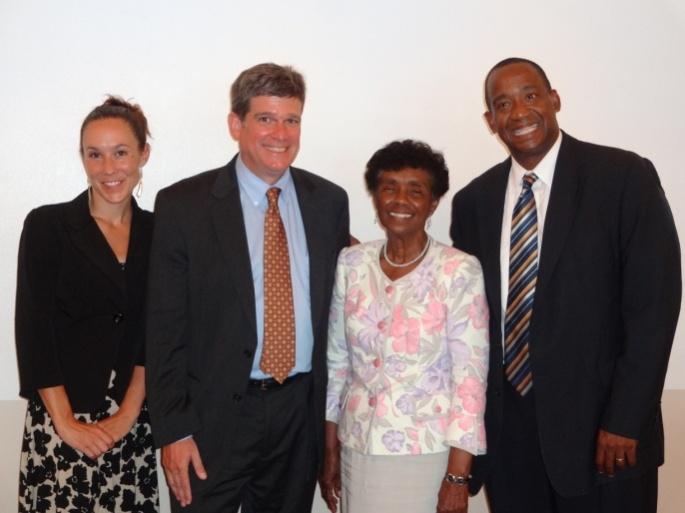
(L-R)Grace Frink (Law Clerk for Judge Marshall), Federal Public Defender Sean Kevin Kennedy,
Judge Consuelo Marshall, Judge Andre Birotte
Judge Consuelo Marshall, Judge Andre Birotte
D. Advanced Mediation Workshop
Mr.Chuan Ng, Deputy District Registrar of the Federal Court of Australia based in Sydney, visited Palau on behalf of the Pacific Judicial Development Program (PJDP) from January 14 through January 16, 2014, to conduct an Advanced Mediation Workshop for local attorneys and interested members of the Palauan judiciary. While in Palau, Mr. Ng also co-mediated two court matters with local attorneys.
This was Mr. Ng’s second visit to the island. In January 2013 he travelled to Palau to conduct the Beginner’s Mediation Workshop which was attended by over 50 participants. During that visit he co-mediated a dispute with local attorney, Mr. Siegfried B. Nakamura.
The 3 day Advanced Workshop was attended by 13 participants who learned a number of advanced mediation techniques including dealing with difficult litigants, managing expectations, bridging cultural communication barriers, as well as participating in intensive role-playing exercises. Palau’s Chief Justice, Arthur Ngiraklsong established a court-annexed mediation program in 2013 where court staff and some local attorneys (acting pro bono) have conducted mediations on behalf of the Court. To date, 20 court matters have been referred for mediation by the Palau Judiciary. 12 of those court matters have been successfully settled (60% success rate), which has benefited the parties and the Judiciary by reducing legal costs and freeing up Supreme Court resources.
The Palau Judiciary strongly encourages people who have legal disputes to use the Supreme Court’s Mediation Program to resolve their differences.
Youth Services Team Helps Palau's Young Adults
Youth Justice is another substantial issue in the Pacific and the way in which our young people are involved in the justice system is a concern of the Judiciary. Probation officers and judges from the Palau Judiciary work with the Juvenile Justice Work Group’s (“JJWG”) Youth Services Team (“YST”) on various programs designed to keep kids in school, teach life and job skills, provide counseling, educate kids and their families about the Family Protection Act. The efforts are primarily intervention methods aimed at keeping youth out of the justice system. They are also designed to help youth who are involved with the justice system transition find ways to transition back to school or work and move forward with their lives in a positive way. The members of YST from the Judiciary participate as speakers and presenters at YST events including youth camps and community forums, and meet regularly with youth participants to engage in community activities.
The JJWG was established in 2012 to focus on policies/reform and work with various agencies and groups to address issues around and improve youth justice services. THJJWG is comprised of volunteers from various governmental and non governmental agencies and offices including the Office of the Attorney General, the Bureau of Public Safety, the Public Defender’s Office, the Ministries of Education and Health, Palau High School, the Probation Office, and Palau Parents Empowered. The YST was established within JJWG to address specific cases, seek optimum services for youth, and provide community awareness projects for youth.
New Court Building under Construction
Construction is progressing on the new courthouse building in downtown Koror. The building is named after the late Judge Pablo Ringang, presiding judge of the Justice Court and the District Court. The new building will provide needed space for Judiciary offices including the Office of the Clerk of Courts, the Court of Common Pleas courtroom and judges’ chambers. The new building is also designed to provide additional space to enable the Judiciary to provide services supporting it’s mediation program and the Family Protection Act including mediation rooms and a Family Protection Act overnight room which will provide a safe temporary space for victims of domestic violence in need. The projected completion date of the new building is April 2015.
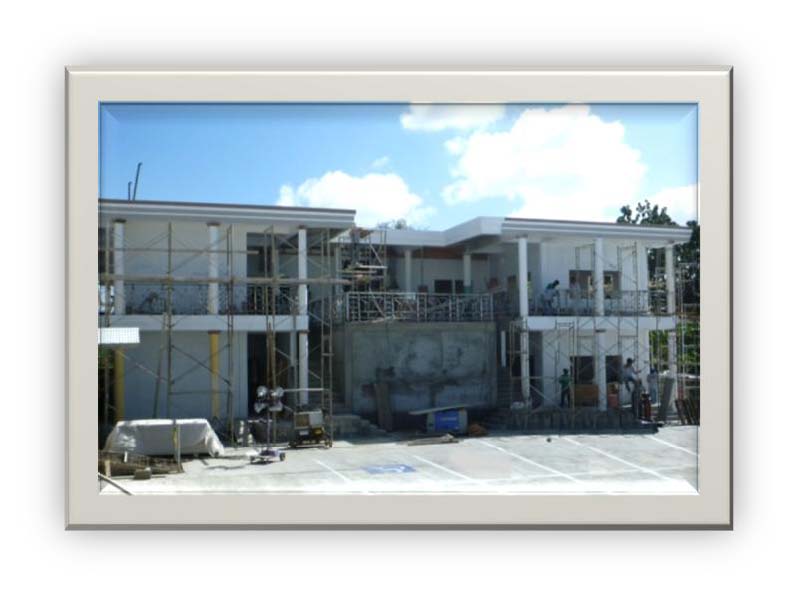 | 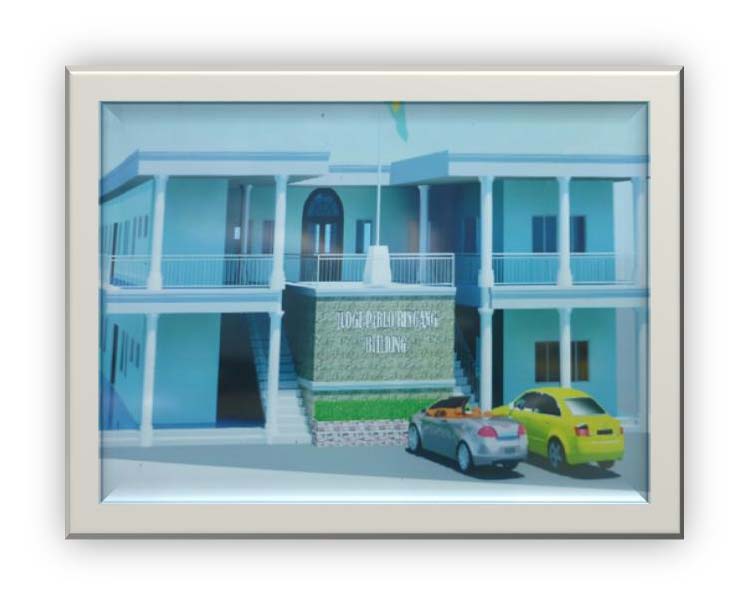 |
The Judiciary Welcomes Its New Court Counsel
In September 2014, the Palau Judiciary welcomed Alexander Weber and Peter Ghattas as the new Court Counsel for the 2014 – 2015 term. Mr. Weber is from Sioux Falls, South Dakota and recently completed a two-year federal clerkship in the United States District Court for the Western District of Missouri. Mr. Weber graduated from Stanford Law School, where he served as the Managing Editor of the Stanford Journal of International Law. During law school, he also worked for the prosecution at two international criminal tribunals – the Extraordinary Chambers in the Courts of Cambodia and the International Criminal Tribunal for the former Yugoslavia – and co-authored a textbook on the constitutional law of the Democratic Republic of Timor-Leste (East Timor). Mr. Weber graduated summa cum laude from Washington & Lee University in 2009.
Mr. Ghattas is from Wellesley, Massachusetts and recently completed a federal clerkship in the United States District Court for the District of Maryland. He graduated magna cum laude from American University Washington College of Law, where he served as a member of the American University Law Review and as a Student Public Defender for the American University Criminal Justice Clinic. During law school, Mr. Ghattas worked for the Center for Reproductive Rights on the cases that would eventually reach the United States Supreme Court as Burwell v. Hobby Lobby. He graduated from The George Washington University with a Bachelor of Science in Economics.
 |  |
Administrative Changes
Juanne Renee Harris, was appointed Administrative Director for the Palau Judiciary in November 2014. Ms. Harris arrived in Palau with a diverse professional background. Most recently she was the Director of The National Campaign to Restore Civil Rights (“NCRCR”), a nonpartisan coalition of over 100 organizations, lawyers, academics, students, and community activists concerned about the erosion of civil rights and social justice laws in the United States Federal Courts. Prior to joining NCRCR, Juanne was a Senior Litigation Associate with Paul, Weiss, Rifkind, Wharton & Garrison LLP in New York City, and also served as a federal judicial law clerk in the United States District Court for the District of New Jersey. She left Paul Weiss in 2008 to join the Obama/Biden Ohio Campaign for Change as a member of the Voter Protection Attorney Team. She was also in-house counsel for Tribeca Enterprises LLC, a diversified media company. Prior to practicing law Ms. Harris spent six years as a marketing and sales executive in the sports and entertainment industry with the National Football League. Born and raised in New York City, she attended the Bronx High School of Science, graduated from Dartmouth College with a History degree, received a Masters of Business Administration from The Kenan – Flagler Business School at the University of North Carolina – Chapel Hill, and completed her law degree with honors at St. John's University School of Law.

The Courts' Work
The Palau Judiciary prides itself on operating ethically and efficiently, producing quality decisions and ensuring access to justice for all of Palau’s citizens. The indicators below measure the judiciary’s performance. The clearance rate and average duration of a case measure how efficiently the courts are managing their case loads. The quality of decisions can be evaluated by the number of decisions appealed and, more importantly, the number of decisions overturned on appeal. And finally, access to justice can be gauged by looking at the fee structure, availability of free legal counsel and accessibility of forms and court services.
The information below provides details about how well the judiciary is doing regarding these indicators.
IV. Accountability: Code of Conduct and Complaints
The Judiciary’s Code of Judicial Conduct was promulgated on March 1, 2011 by the Palau Supreme Court and amended on March 9, 2011. A copy of the Judicial Code of Conduct can be retrieved from the Palau Judiciary website: http://wwww.palausupremecourt.net, Rules & Other Publications, Judicial Code of Conduct. In 2014, two complaints were received against judicial officers.
There were no complaints made against Judiciary staff in 2014.
V. Case Management (Supreme Court, Land Court, and Court of Common Pleas)
A. Clearance Rates
The Palau Judiciary recognizes its obligation to dispose of cases before it in a reasonable time. Accordingly, the Court seeks to finalize cases in a timely manner. The “clearance rate” reflects cases “cleared” or finalized as a percentage of (in relation to) the total number of cases filed. Where clearance rates have declined, this reflects a comparable decline in the overall number of cases filed.
Although the Family Protection act was enacted in November 2012, the first case under this act was filed in 2014.
2014 Clearance rate summary for all courts is as follows:
B. Average Duration of a Case
When rendering a decision in a matter, the Judiciary’s goal is to provide such decisions in a timely manner. Because of the complexity of their work, however, Judges may not always announce their decisions immediately at the conclusion of a case and some decisions may be delivered at a later date.
The charts below provide details about the average duration, from filing to finalization (not including appeals) for the different types of cases heard in the Supreme Court – Trial- Division, Land Court and Court of Common Pleas.
C. The Court of Appeals
A total of forty-one (41) appeals were filed in 2014. These numbers represents the number of appeal applications made in the various lower courts. The number of appeal applications does not represent the actual number of cases decided in the lower courts that can be appealed, and does not reflect whether the appeal was successful.
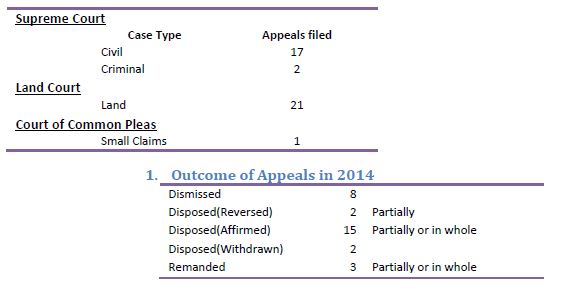
D. The Court of Common Pleas
The Majority of cases handled by the Court of Common Pleas are Citations and are heard weekly. A citation can be paid at the Office of the Clerk of Courts if an offender does not contest the charge(s). Certain types of Citations cannot be paid directly, however, and the offender must appear before the court. The various types of Citations are:
- TCC – Traffic violations and some misdemeanor charges.
- JTC & JDC – Juvenile Citations
- MCC – Marijuana
- K SG – Koror State Government
- ABC – ABC Board
- DRT – Division of Revenue and Taxation
- WSC – Water Safety Citation
The chart below details the number of ctations, by type, issued for the past five (5) years.

There were a total of 1,047 citations filed with the Court of Common Pleas in 2014.
Other case types filed with the Court of Common Pleas include criminal, civil, domestic abuse, small claims, and juvenile cases. In 2014, 52 Criminal (CR), 125 Civil (CA), 24 Domestic Abuse (CA/DA), 65 Small Claims(SM), and 1 Juvenile (JV) case were filed with this court. The overall total number of cases filed in the Court of Common Pleas in 2014 was 1,314 cases. The total number of cases disposed of by the Court of Common Pleas in 2014 was 1,134.

At the end of the year 2014, Court of Common Pleas had a total of 266 cases pending on its docket.

VI. Accessibility and Fairness
The Judiciary functions to make the courts and justice accessible to all. As part of this effort, it provides fee waivers, conducts annual public surveys, and has created a judiciary website, where members of the public can find rules, publications, court calendars, forms, information on selected cases, information about fees, and press releases. Please visit us at: http://www.palausupremecourt.net.
A. Free Legal Aid
In 2014, more than 187 parties in criminal cases, 8 parties in juvenile case, 65 parties in cases before the Court of Common Pleas, and 50 parties in civil cases received free legal aid.
B. Court Fee Waiver
Lack of money should never be a barrier to justice. Accordingly, another way that the Court ensures access to justice for all is to provide fee waivers to parties who cannot afford the costs associated with filing a lawsuit. Fees may be waived by the court of proper jurisdiction if the Petitioner or Plaintiff requests such a waiver using the appropriate form. The fee waiver form is available at the Office of the Clerk of Court and on the Judiciary Website under Forms. (http://palausupremecourt.net).
No fee waivers were requested in 2014.
State governments, government agencies, semi-government agencies, authorities, commissions, and boards are not required to pay the filing fee but will be charged the usual fees for service of papers by the Marshals.
C. Access and Fairness Public Survey
For the past four years the Judiciary has conducted public surveys to solicit public opinion and feedback to aid in the judiciary’s efforts to improve court services. During the week of June 8 – June 14, 2014, the Court conducted a customer survey designed to measure public satisfaction with regards to: 1) access to the courts and; 2) perceptions about fairness. 115 people completed the survey. The survey group was made up of court customers from diverse backgrounds including Palauans, Americans, Filipinos, and Bangladeshi, who visited the Court to utilize various court services such as searching for information, paying fines and attending court cases.
The graphs below detail the survey outcomes.
Q1. The forms needed were clear and easy to understand.
Number of Responses: 110
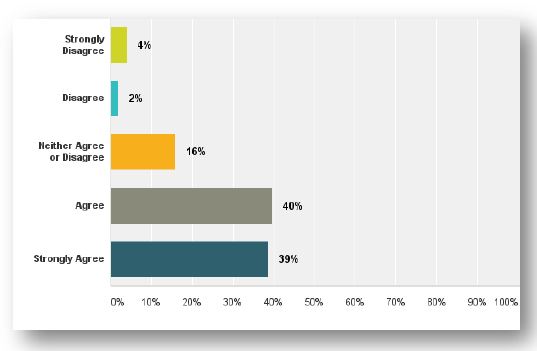
Q2. I was able to get my business done in a reasonable amount of time
Number of Responses:
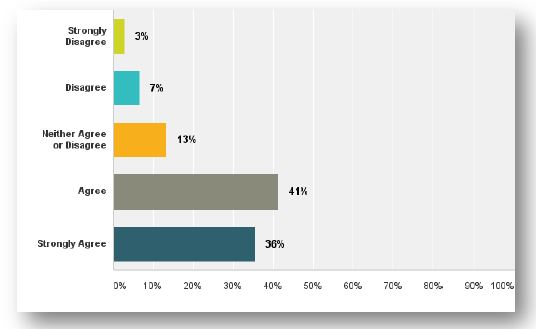
Q3. Court staff paid attention to my needs
Number of Responses: 107
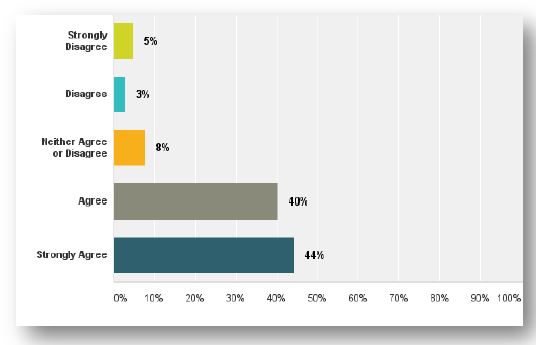
Q4. I was treated with courtesy and respect.
Number of Responses: 109
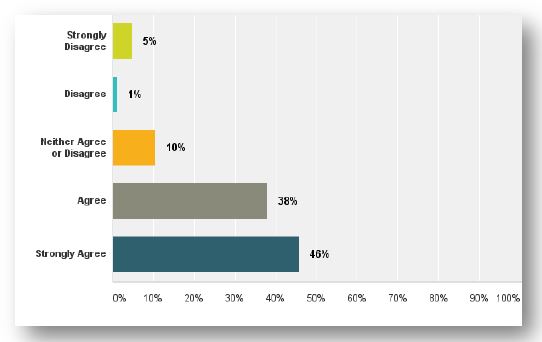
Q5: I easily found the courtroom or office I needed.
Number of Responses: 109
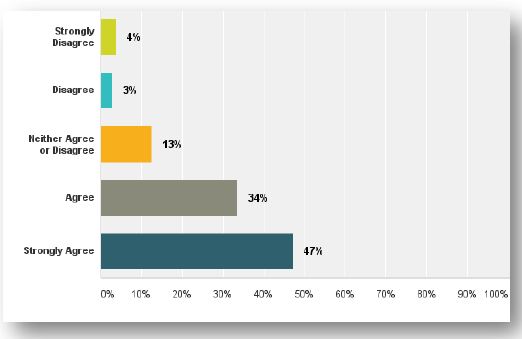
Q6: The Court's website was useful.
Number of Responses: 110
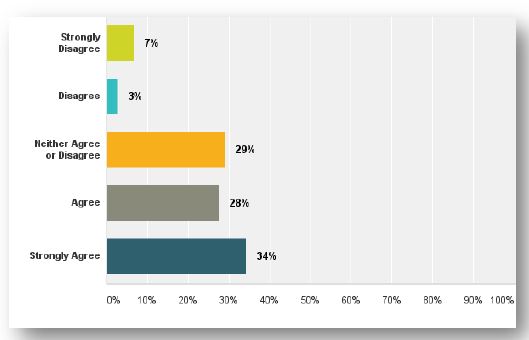
Q7: The way my case was handled was fair.
Number of Responses: 108
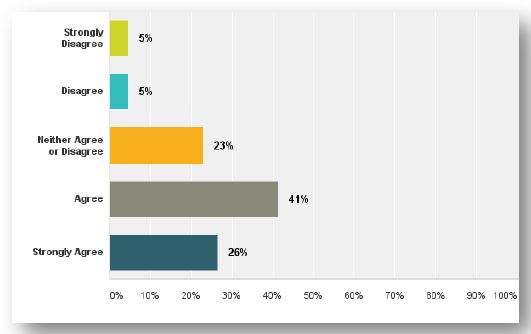
Q8: I was treated the same way as everyone else.
Number of Responses: 107
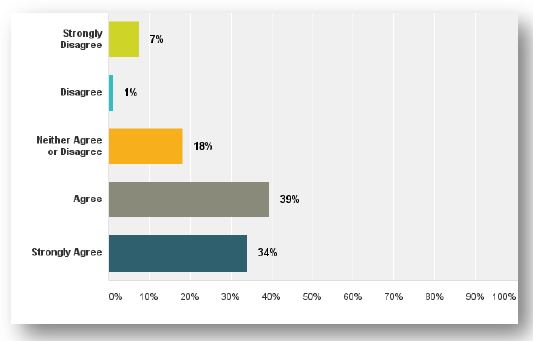
Q9: The judge listened to my side of the story before he or she made a decision.
Number of Responses: 106
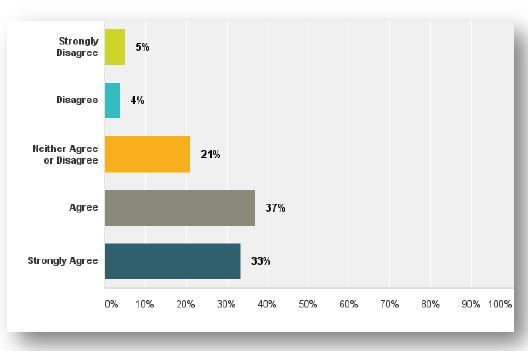
Q10: The judge had all the information necessary to make a good decision about my case.
Number of Resposes: 108
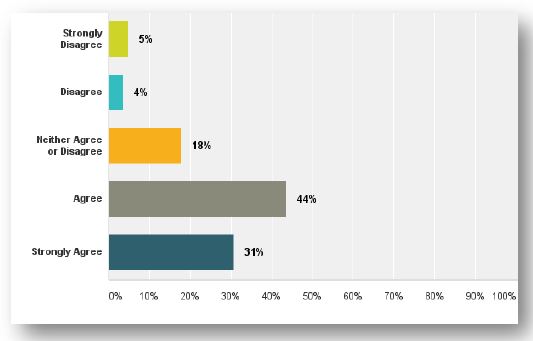
Q11: As I leave the court, I know what to do next about my case.
Number of Responses: 107
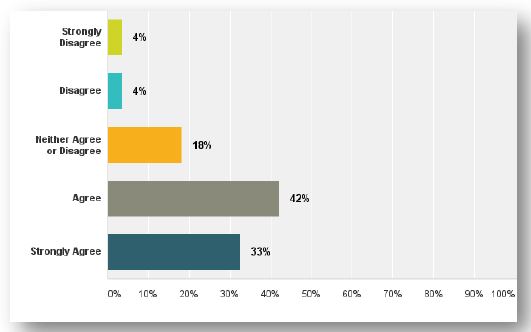
Q12: I checked the website.
Number of Responses: 100

Q13: Was the website useful?
Number of Responses: 26
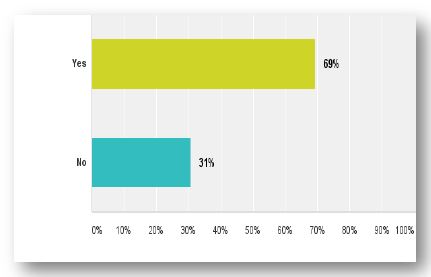
Q14: Did you like it?
Number of Responses: 24
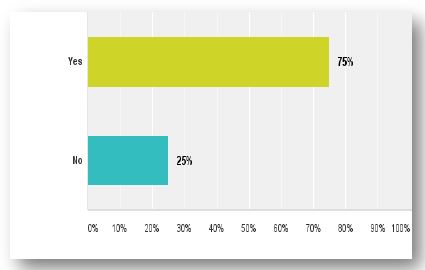
Q15: Where did you go on the website?
Number of Responses: 19
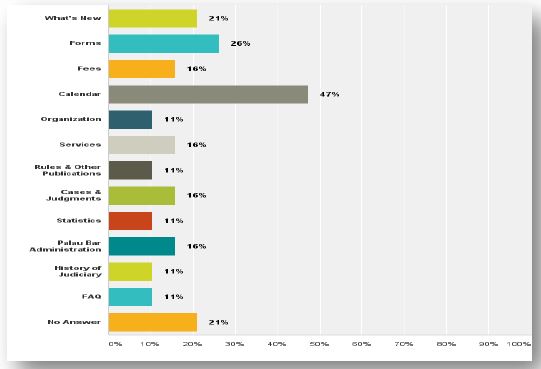
Q16: What did you do at the court today?
Number of Responses: 99
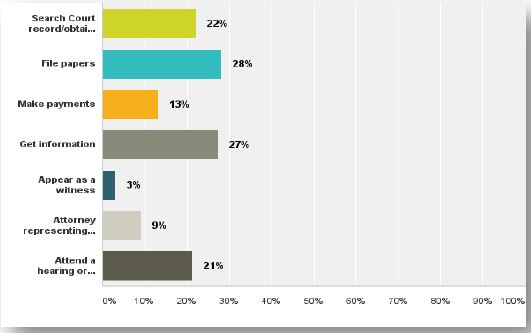
Q17: What type of case brought you to the court today?
Number of Responses: 99
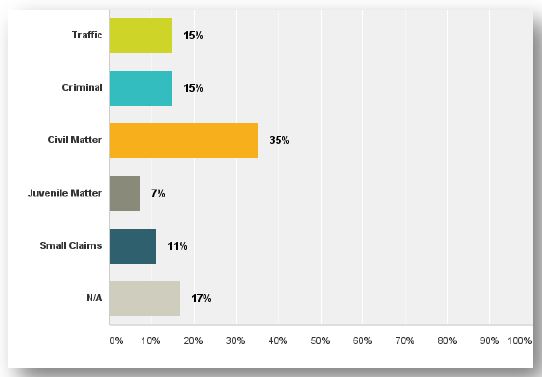
Q18: How do you identify yourself?
Number of Responses: 105
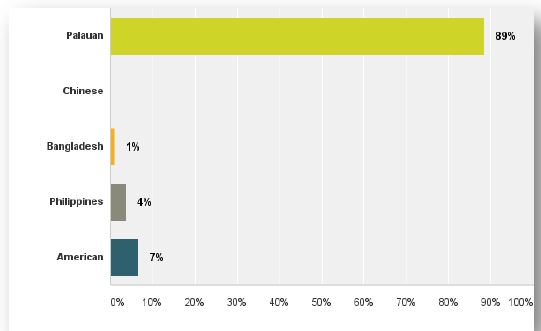
Q19: What is your gender?
Number of Responses: 109
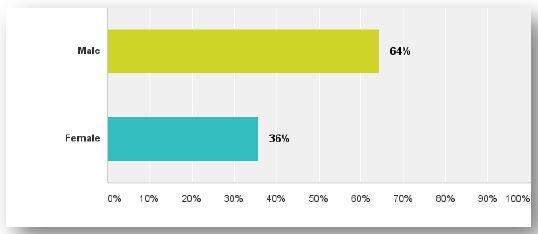
VII. Court Offices, Departments, and Technology
A. Office of the Clerk of Courts
The Office of the Clerk of Courts is the largest division within the Court and is the primary point of contact for persons interacting with the Judiciary. The main purpose of the office is to provide clerical assistance and support to Judges and service the public. The office processes all documents filed with the Court, including civil and criminal cases and appeals, traffic and other citations, warrants, and jury summons. It handles vital statistics, such as birth, death, and marriage certificates, and land transaction documents. The office receives and disburses funds related to court cases such as fines, restitution, and child support payments. The deputy clerks also work in the courtroom to record proceedings and provide interpretation when necessary. And finally, the Clerk of Courts handles a variety of miscellaneous services, from the certification of documents to fielding inquiries from parties, attorneys, and the public about court cases or procedures.
1. Birth Records
Four hundred and nine (409) birth certificates were recorded at the Office of the Clerk of Courts in 2014.
2. Death Records
One hundred and seventy (170) death certificates were recorded at the office of the Clerk of Courts in 2014, an increase of 11 records compared to 2013.
3. Marriage Records
One hundred and twenty-three (123) marriage certificates were filed at the Office of the Clerk of Courts in 2014, an increase of 22 records compared to 2013.
4. Land Records
One thousand seven hundred sixty four (1,764) land records were recorded at the Office of the Clerk of Courts in 2014. One thousand two hundred sixty six (1,266) land documents were recorded in 2013.
5. Land Registry
The Office of the Registrar plays a vital role in land matters. The Registrar records all documents that transfer title to land and supervises the operation of the Central Land Registry Section. The Central Land Registry Section is the repository for all property plats and final cadastral maps, certificates of title, determinations of ownership, and other land-related documents.
In 2014, nine-hundred six (906) Certificate of Titles (CT) were issued by the office of the Land Registry. There were five hundred thirty three (533) Certificates of Title issued in 2013.
In addition to the Certificates of Title mentioned above, five hundred thirteen (513) land documents were recorded with the Land Registry.
6. Land Court Mediation
None of the nine hundred and ninety (990) new cases brought to Land Court were decided through mediation.
7. Supreme Court Mediation
Pursuant to Article X, section 14, of the Constitution of the Republic of Palau, the Supreme Court added “Rule 72: Initiation of Mediation Procedures” to the Rules of Civil Procedures on February 27, 2013. Mediation is an extrajudicial procedure for resolving civil disputes. A mediator facilitates negotiation between parties and assists them in trying to reach a settlement. The mediator, however, does not have the authority to impose a settlement upon the parties. Mediators are court staff, judges, and some local attorneys (acting pro bono).
In 2014, seventeen civil cases were referred to mediation. Out of those seventeen cases assigned to mediation 5 of them were settled within 2014. There were six other cases settled through mediation in 2014 but they were referred to Mediation in 2013. In 2013, there were only 2 cases resolved through mediation in the Supreme Court.
The Court strongly encourages people who have legal disputes to use the Supreme Court’s Mediation Program to resolve their differences.
B. Marshal Division
The Marshal Division was created in 1998. The marshals are responsible for serving court documents, executing bench warrants, acting as bailiffs, and providing security for all of the courts. The marshals are also authorized to make court-ordered arrests.
Served Documents:
This division served a total of seven thousand nine hundred and seventy-one (7,971) documents in 2014. In 2013 it served 7,343 documents.
Bailiff Services:
Additional services rendered by the marshals include night monitoring of probationers and the judges’ residences.
C. Probation Office
The Office of Probation monitors and submits reports on criminal offenders sentenced to probation. The Office seeks to ensure that the terms and conditions of probation are met by providing educational and job placement assistance and counseling. The Office of Probation also prepares and submits pre-sentencing reports to the Court to assist with determining appropriate sentence of criminal offenders.
D. Law Library
The Singichi Ikesakes Law Library houses over 16,000 legal volumes, including all sources of Palauan Law, international law reporters, and an array of treatises and reference books. Photocopying services are also available. The law library is open to the public from 7:30am to 4:30pm Monday through Friday. Arrangements may be made with the law librarian, no later than 3:30pm on Thursday, to use the law library during weekend hours (the requester will be charged for the costs associated with personnel overtime). Paid photocopying services are also available at the law library.
The Moses Mokoll Memorial Law Library, located in Melekeok, is open from 7:30 a.m. to 4:30 p.m. Monday through Friday only.
Because of the quick deterioration of documents and lack of storage space, an archiving project is in progress. The Judiciary aims to have all documents scanned and available electronically. Many files have already been scanned and are now stored in an easily accessible database.
E. Technology - Management Information Systems (MIS)
The MIS Division provides the Judiciary with computer resources. The Division maintains a networked database that provides ready access to records and cases to all court staff. Members of the public are welcome to access court records electronically at the Office of the Clerk of Courts, located in Judge Pablo Ringang Building in the Court Complex in Koror and at the Judiciary Building at Ngerulmud Melekeok.
With substantial financial assistance from the Taiwan government, the Judiciary was able to launch its Judiciary Information Systems (JIS) in November 2011. JIS is a web-based database program and is accessible at both the Koror and Melekeok Judiciary locations. The system aids the court in case and resource management and administrative services. The court continues to seek ways to utilize technology to provide better customer service and is researching ways and funding to expand the JIS system.
F. Facility and Property Management
The Property Management Office maintains the Court's buildings and grounds, maintains an inventory of the Court's property, and procures supplies for use in the administration of the Judiciary.
G. Budget Office
The Budget Office is responsible for managing the financial resources of the Judiciary in accordance with the laws, regulations, and policies of the Republic of Palau.
The Budget Office oversees the following: (1) financial statements and reporting; (2) cash receipts; (3) accounts receivable; (4) cash disbursements; (5) accounts payable; (6) appropriations; (7) audit; (8) revenue forecast; (9) seek grants; and (10) budget.
The office provides a comprehensive financial management system that is efficient, effective, independent, and accountable.
H. Office of the Court Counsels
The Office of the Court Counsel is primarily responsible for assisting the Justices and Judges with legal research related to cases that come before the Court. In addition, Court Counsels assist in preparing court publications and provide advice on the legality of administrative operations. The Office consists of two to three attorneys under contract for one year and recruited from the law clerks of U.S. federal and state courts.
I. Human Resource Office
The Human Resource office is responsible for overseeing personnel matters, including hiring, performance evaluations, pay raises, and training for staff. The Office also maintains personnel files for every Judiciary employee and processes contracts for those employees who are hired on a contractual basis.
VII. Annual Budget - FY2014
IX. Court Personnel (as of January 2015)
Melekeok
Koror
Palau Judiciary
P.O. Box 248
Koror, Republic of Palau
PW 96940
Telephone: (680)488-4979/3331/2607
Facsimile: (680)488-1597
Electronic Mail: palaujudiciary@palaunet.com
Website: http://www.palausupremecourt.net
P.O. Box 248
Koror, Republic of Palau
PW 96940
Telephone: (680)488-4979/3331/2607
Facsimile: (680)488-1597
Electronic Mail: palaujudiciary@palaunet.com
Website: http://www.palausupremecourt.net